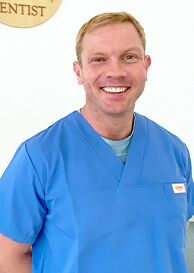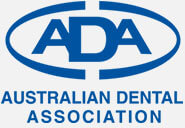Your Caring Dentist Near Morningside
Diverse Range of Dental Procedures for the Whole Family
Our Dentists
Providing high standard of dental care with most current treatment options and latest technology.
Our Dentists have received full training in Australia and have vast experience.
Members of Australian Dental Association, registered with AHPRA and other professional bodies.

Dr Grace Kim
Dr Grace Eun Ah Kim AHPRA Registration No DEN0000988580,
type: General

Dr Gloria Kim
Dr Gloria Kim AHPRA Registration No DEN0001370804,
type: General

Dr Anna Zhou
Dr Anna Yanbo Zhou AHPRA Registration No DEN0000977315,
type: General

Dr James Keys
BDS (UQ)
Complete
Dental Care
Providing dental solutions
For children and adults
Medically compromised
Special needs
Veterans
Child dental benefits schedule
Patients referred by the government
Book Your
Appointment Today
If you have private insurance please let us know which company in the form below.
Special Offers
- Your name
- Your phone number
- Your email
- The treatment you want
- Your dental health fund
- Your available days
and we will arrange an appointment for you.
New Patient Special
Applicable for regular general clean, excluding deep clean or extended clean. Seniors' discount does not apply.
$150 (usual fee is $230)
$220 (usual fee is $300)
$280 (usual fee is $340)
Dental Implants
Braces
Teeth Whitening
$300
$300
We Accept the Following
10% Discount for Seniors. (*TC) applies to 65yrs & over relating to general procedures only
Bulk billing service for:
CDBS Voucher (Child Dental Benefits Schedule). (*TC),
Metro South Vouchers (general or emergency),
Veteran members with DVA Card.
All health funds are accepted and direct claims can be made with HICAPS facility. (*TC)

We are proud members of:




Frequently Asked Questions
What are the steps in performing a root canal procedure?
Root canal therapy is an important dental treatment aimed at addressing infection within the root canal system of a tooth. It is often the preferred treatment to save a tooth that might otherwise need to be removed. The process involves several steps, each crucial to ensure the long-term success of the treatment.
Step 1: Diagnosis and X-ray
The first step in root canal therapy involves a thorough diagnosis of the infected tooth. A dental team will take detailed X-rays to examine the shape of the root canals and determine if there are any signs of infection in the surrounding bone. Patients receive an explanation of the findings and the proposed treatment plan.
Step 2: Local Anaesthesia
To ensure comfort and minimise discomfort during the procedure, local anaesthesia is administered in the area surrounding the affected tooth. This step is essential for relaxing the patient and making the area numb.
Step 3: Creating an Access Opening
Once the area is anaesthetised, a dental dam is applied around the tooth to ensure cleanliness and saliva control throughout the procedure. Subsequently, a small access hole is drilled into the tooth’s crown to access the pulp chamber and root canals.
Step 4: Cleaning the Root Canal
Using special instruments, such as files, the dental team will carefully clean out the infected tissue from the canals and shape the space for filling. During this process, the canals are flushed with disinfecting solutions to eliminate any remaining bacteria and debris.
Step 5: Shaping the Canals
After cleaning, the next step involves shaping the canals with tiny, flexible instruments. This process prepares them for the filling material. Shaping is also accompanied by irrigation to wash away any residual debris and to keep the canals clean.
Step 6: Filling the Root Canal
The canals, cleaned and shaped, receive a biocompatible filling, often gutta-percha. An adhesive cement is used to place this material, ensuring the canals are fully sealed. A proper seal is crucial to prevent bacteria from re-entering the root canal system.
Step 7: Final Restoration
After filling the canals, a temporary filling material closes the access hole. The patient returns later for a crown or alternative restoration placement, which is crucial to protecting the tooth and restoring full function.
Step 8: Follow-up Care
After root canal therapy, follow-up visits are essential to monitor the healing process. These appointments are part of providing quality dental care and ensuring the treatment’s success. The dental team will check for any signs of infection and ensure that the tooth and surrounding gums are healing properly.
If you’re considering root canal therapy or have questions about this treatment, feel free to reach out to our dentist. Morningside residents will find that our dentist provides not only high-quality treatment but also a reassuring and informative approach to dental care.
How does general dentistry differ from cosmetic dentistry?
Understanding General Dentistry
General dentistry addresses a wide array of dental health concerns, focusing on the teeth, gums, and related facial and jaw areas. It is the foundation of dental care and covers various aspects necessary for maintaining oral health. This type of dentistry includes regular dental check-ups, cleaning, and X-rays, as well as filling cavities, managing tooth decay, and treating gum diseases. General dentists are equipped to handle oral health issues across all age groups, making them the primary point of contact for dental health.
The Scope of General Dentistry
The main aim of general dentistry is to prevent dental issues before they become serious. General dentists perform routine teeth cleanings and examinations, typically recommending patients to visit at least twice a year. These visits allow dentists to identify issues early on and take preventative measures to avoid extensive procedures later. For children and adults alike, general dentistry provides fluoride treatments and advice on proper brushing and flossing techniques. Additionally, general dentists are responsible for restorative services like repairing damaged teeth through crowns or bridges, and they play a crucial role in treating dental emergencies such as toothaches or broken teeth.
Introduction to Cosmetic Dentistry
On the other hand, cosmetic dentistry’s main goal is to enhance the aesthetics of teeth, mouth, and smile. It provides elective or desired treatments rather than essential ones. Cosmetic dentistry involves procedures that enhance the aesthetic appeal of your smile, which can improve overall appearance. Typical cosmetic procedures include teeth whitening, veneers, bonding, and cosmetic orthodontic treatment.
The Scope of Cosmetic Dentistry
Cosmetic dentistry can offer restorative advantages as well. For example, dental fillings are frequently used to treat decayed teeth. In the past, fillings were often made of gold, amalgam, and other materials that left noticeable dark spots on teeth. Nowadays, fillings made of porcelain or composite materials can be considered cosmetic dentistry, as they closely match the natural colour of your teeth, preserving their appearance and your smile.
General dentistry procedures are often essential for maintaining dental health, whereas cosmetic procedures are elective. The health benefits of general dentistry make it a necessary facet of healthcare for eligible children and adults to ensure they maintain optimal oral health.
What languages do your dentists speak?
Our dentists are fluent in English, Korean, Chinese, and Malaysian. This multilingual proficiency ensures that we can offer high-quality dental services to a diverse patient base, enhancing communication and understanding during each visit.
Note: Any surgical or invasive procedure carries risks. Before proceeding, you should seek a second opinion from an appropriately qualified health practitioner.








